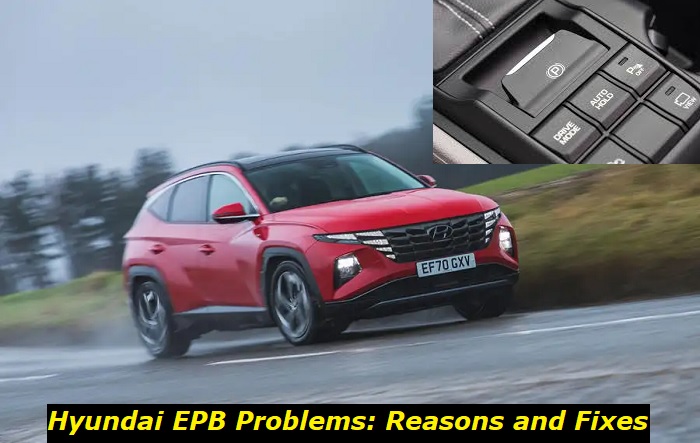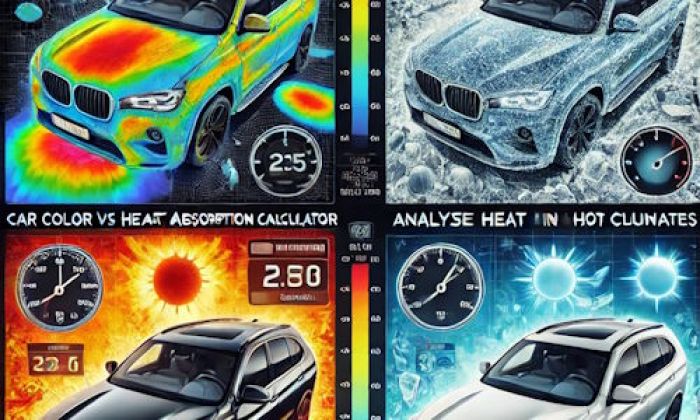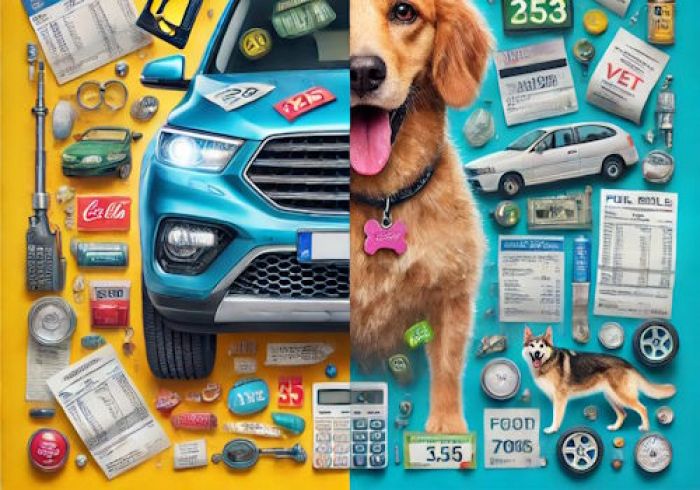If you see the EPB warning light in Hyundai, it means one or several systems malfunction and the EPB may not be working at all, so an immediate solution is needed. It's usually hard to locate the problem on your own as it requires reading the codes. But, in this article, I will also give you several tips on what you can do before going to the dealership.
EPB problems highlights
- Level of urgency:medium
- DIY inspection:impossible
- DIY repair:impossible
- Can you drive?yes (unless it's locked up)
- Price for repairs:$200 - $350
- Symptoms:locked parking brake, EPB doesn't engage, EPB warning on the dash
- Ways to solve:take it to the dealer, try resetting the system by disconnecting the battery

What's EPB in your Hyundai vehicle?
EPB stands for Electronic Parking Brake. In older cars, you had a lever that you had to pull in order to activate the parking brake. This lever had metal wires connected to it and they mechanically activated the parking brake. Now, things are different. Car manufacturers decided to introduce more electronics to their cars and got rid of metal wires.
Modern Hyundai vehicles are equipped with the EPB system. It consists of several important units:
- the EPB switch that's usually located on the central console in the bottom part;
- the electronic control module that receives and sends the signals;
- the actuators that work to press the brake pads to the rotors on the rear wheels of your car;
- the sensors and all other parts that communicate with this system and make it smarter.
For example, in the majority of modern models, the EPB will automatically disengage as soon as you start driving the car. How many times did you forget to disengage the parking brake in your previous vehicle and this cost you the new set of brake pads?
But this system is not problem-free. This is the largest disadvantage of the EPB. On the one hand, it's good, smart, and very convenient, on the other hand, it can break down or malfunction heavily and you will not have the opportunity to use the parking brake.
What are the common problems with Hyundai EPB?
All kinds of different problems are happening with the EPB system in Hyundai. Surprisingly many issues are reported by drivers even if their cars are relatively new and have just a few miles on them.
Here are the most common reports:
- the EPB light doesn't go on when you start the car;
- the EPB light is on when you are driving;
- the parking brake is stuck engaged and you can't drive;
- the parking brake cannot be engaged.
Fortunately, the system is not that complicated and has several common problems that are not that hard to locate. So, if you go to the dealership or a good independent shop, they will immediately find the issue and repair your car.
Here are the possible issues that cause EPB problems in your Hyundai:
1. EPB module glitch
Surprisingly many Hyundai owners report glitches in the EPB module. It means everything is functioning well but the electronic control module of the parking brake is not OK. It may not react on your tries to activate or deactivate the parking brake. Or it may send codes to the ECU and you will see the check engine light, the EPB light, etc.
Fortunately, if the module is not damaged by water or mechanically, it can be reset. Later in this article, I will tell you how to deal with this problem.
2. Switches and sensors problem
The parking brake module in your Hyundai communicates with different switches and sensors. For example, it may get readings of wheel speed sensors or brake pedal switch. The module can be programmed to not engage in certain conditions and the broken switch or sensor may show exactly these conditions.
This means that vast inspection is sometimes needed to understand the reason for EPB malfunctioning. Fortunately, a good Hyundai scanner will quickly find the actual problem and will most likely help you solve the issue.
3. Wiring and connections
I've heard people reporting their EPB problems in Hyundai vehicles after they spilled some water in their cars. If you spill coffee right onto the EPB switch, it will most likely stop working. Also, its connections may corrode and it will work intermittently.
In this case, you may need to replace the switch or at least take it off and clean the connections. Sometimes, wiring replacement will be needed just because of the water damage.
4. Switch problems
EPB switch is pretty sensitive and if you keep torturing it by pulling hard, it will most likely give up in several months. It's good if you break the switch earlier than your warranty is over. In this case, the warranty will pay for the repairs.
Unfortunately, there is no way you can repair the broken switch. It should be replaced with an OEM part which is not that cheap.
5. EPB motor or actuator failure
This problem is pretty common for high-mileage cars. Hyundai uses quite durable motors and actuators for the EPB system in its cars, but it doesn't mean they will live forever. Quite often, owners of 10-year-old cars have to pay for the new EPB motor. This is a small but still quite expensive part.
Also, installing the motor is not a DIY job at all, so you should include some labor costs, too.
What are your options to deal with the EPB problem?
First of all, you should try several DIY solutions that can work on the spot and repair your EPB. For this, try the following:
1) Reset the EPB
For this, you will need to follow these simple steps:
- park your vehicle in a safe spot without a steep incline;
- keep the engine or ignition on;
- press the brake pedal to avoid rolling back;
- pull and hold the EPB switch - the EPB light should come on and then off;
- release the switch and then pull it again shortly to activate the brake.
Now, you should turn off the vehicle, start it again and check. The problem may have disappeared, at least for some time. If it helped, your initial problem was most likely with the EPM module glitch.
2) Disconnect the battery
Disconnecting the battery will not only reset the EPB module but will also work with all other electronic modules and systems. This may help you get rid of several electronic problems in your vehicle.
Remember that when disconnecting the battery, the negative terminal comes first. But when connecting it back, the positive terminal should come first.
3) Read the codes
Sometimes, it's helpful to read the codes in your ECU. Some codes may tell you about problems with sensors or switches that communicate with the EPB system. After solving the problem with the codes, you may find that the parking brake is functioning well.
4) Use the switch to turn on and off the brake several times
If the problem is with the switch connections or with the switch itself, you may solve it temporarily by applying the parking brake several times. This may help you deal with the EPB light on the dash and also apply the brake when needed. Of course, this will still require further inspection and repair, but at least, you can apply the brake when you need this.
5) Go to professionals
Driving with a malfunctioning parking brake is never a good idea. If you can't deal with the problem on your own, you should find a way to solve the issue with the help of professionals.
If your Hyundai is still under warranty, the best choice is to go to the dealership. They will most likely solve the problem with no charges. But without the warranty, it's better to find a good independent repair shop and ask them to inspect the vehicle. This will cost you less, in the end.
Can you drive with a bad EPB in your Hyundai?
If the EPB is not stuck activated, you can drive. But there is one thing to remember - never park your car on a hill if your parking brake is malfunctioning. This will lead to issues with your transmission (parking pawl). So, only park the car on the flat ground.
Of course, this is a temporary solution and you should go to the repair shop as soon as you can. You should have your car inspected by a professional even if you could get rid of the problem by resetting the EPB in your Hyundai. The problem may reappear soon and will be much harder to deal with.
About the authors
The CarAraC research team is composed of seasoned auto mechanics and automotive industry professionals, including individuals with advanced degrees and certifications in their field. Our team members boast prestigious credentials, reflecting their extensive knowledge and skills. These qualifications include: IMI: Institute of the Motor Industry, ASE-Certified Master Automobile Technicians; Coventry University, Graduate of MA in Automotive Journalism; Politecnico di Torino, Italy, MS Automotive Engineering; Ss. Cyril and Methodius University in Skopje, Mechanical University in Skopje; TOC Automotive College; DHA Suffa University, Department of Mechanical Engineering






Add comment